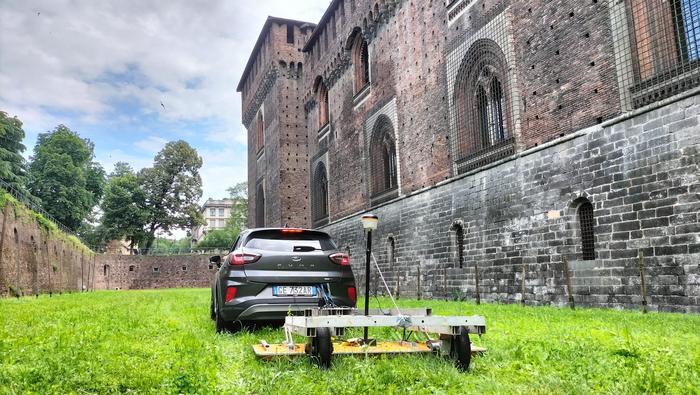Hidden mysteries underneath iconic Italian castle unravelled
Method can also help investigate other historical sites around the world, researchers say
Your support helps us to tell the story
From reproductive rights to climate change to Big Tech, The Independent is on the ground when the story is developing. Whether it's investigating the financials of Elon Musk's pro-Trump PAC or producing our latest documentary, 'The A Word', which shines a light on the American women fighting for reproductive rights, we know how important it is to parse out the facts from the messaging.
At such a critical moment in US history, we need reporters on the ground. Your donation allows us to keep sending journalists to speak to both sides of the story.
The Independent is trusted by Americans across the entire political spectrum. And unlike many other quality news outlets, we choose not to lock Americans out of our reporting and analysis with paywalls. We believe quality journalism should be available to everyone, paid for by those who can afford it.
Your support makes all the difference.Scientists have discovered hidden structures underneath Milan’s fifteenth-century Sforza Castle, hinting at the presence of secret passageways depicted in the drawings of renowned artist and engineer Leonardo da Vinci.
The castle stands today as an emblem of Italian history, long captivating the imaginations of historians, architects, and engineers.
It has served as a fortress, residence, and seat of power in Milan since its construction in the 15th century and over the years, countless legends have emerged about its underground chambers.
One of these stories involves the Duke of Milan Ludovico il Moro who allegedly using a secret passageway to visit his wife, Beatrice d’Este.
The underground passage was also depicted in the drawings of renowned polymath Leonardo da Vinci.

Now, a study applying advanced ground-penetrating radar technology provides fresh evidence that such underground corridors and similar architectural features may indeed exist beneath the castle.
The latest radar survey detected subsurface anomalies beneath the castle suggesting the presence of hidden structures.
This technology emits electromagnetic waves into the ground, and by analysing the reflected signals, scientists could identify variations in soil composition, density, and the presence of voids.
Using the radar surveys, researchers hope to create a digital twin of the Sforza Castle to be used as an interactive tool that facilitates exploration of the site’s historical changes over time.
“The ground penetrating radar enriched the 3D model with data on known but inaccessible spaces, bringing to light unknown walkways and ideas for further studies on secret passages,” said architecture researcher Francesca Biolo who was involved in the project.
Scientists hope to apply augmented reality (AR) technology in this reconstruction to “transform how individuals interact with history”.
The findings have not only unravelled potential secrets lying hidden under the castle but also prove that such technologies can serve as a model for investigating other historical sites around the world.
“The castle is not just a monument; it is a repository of stories waiting to be told, each layer of stone representing the lives and legacies of those who came before,” researchers wrote.
“The data collected from the castle could foster new avenues of research within the academic community, spurring further studies into secret passages and their roles in historical narratives,” they said.

Join our commenting forum
Join thought-provoking conversations, follow other Independent readers and see their replies
Comments